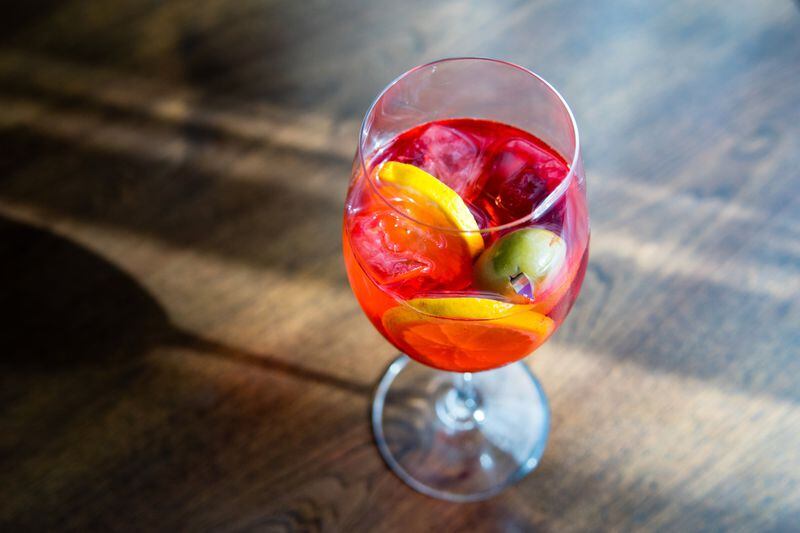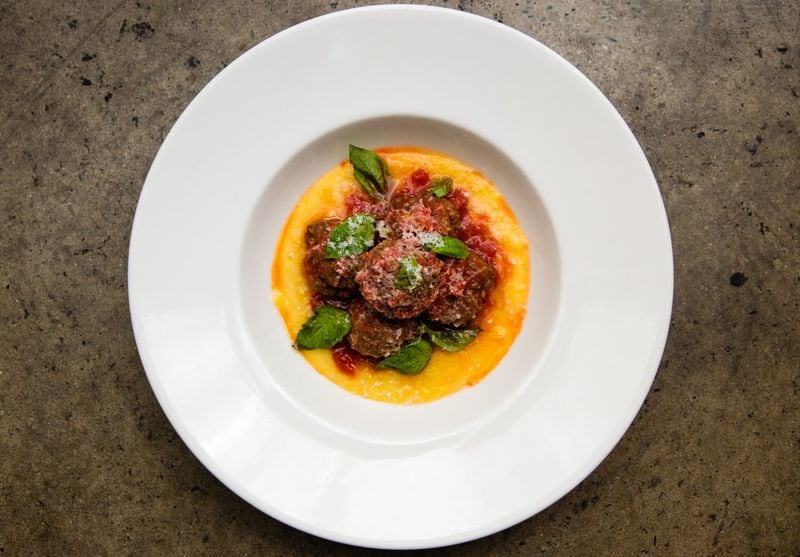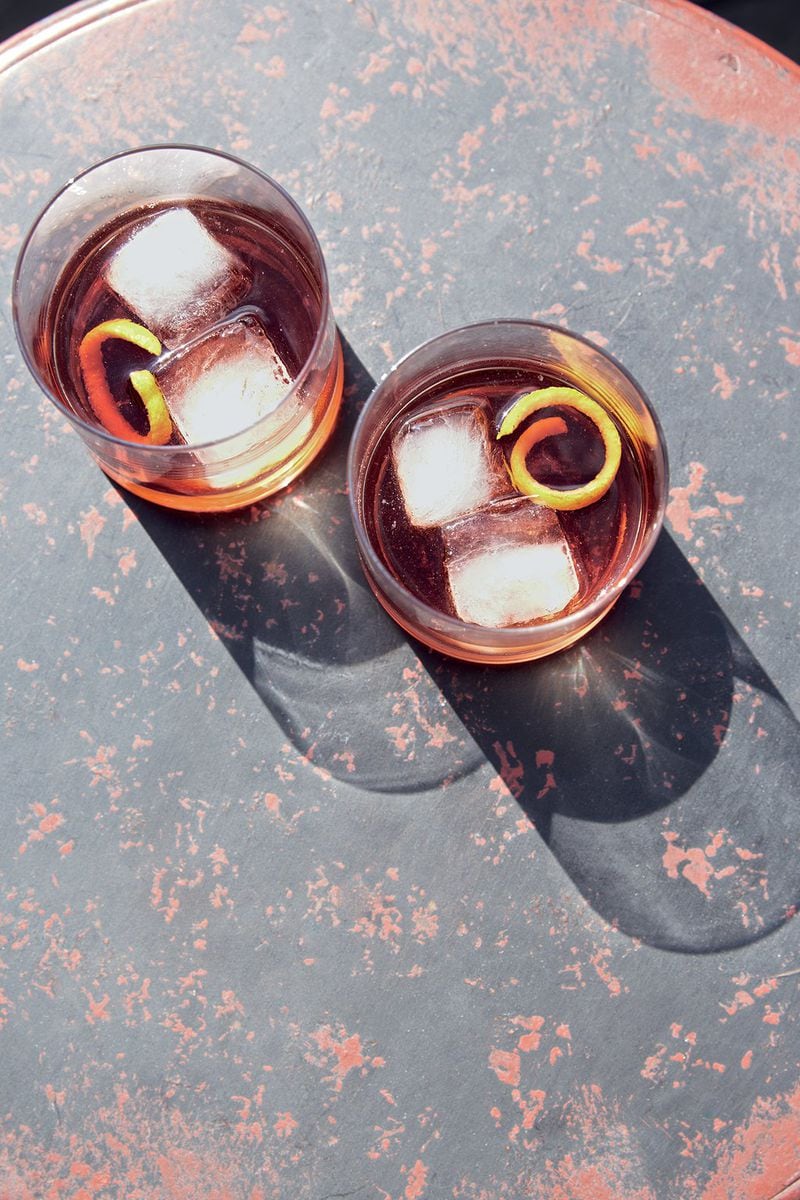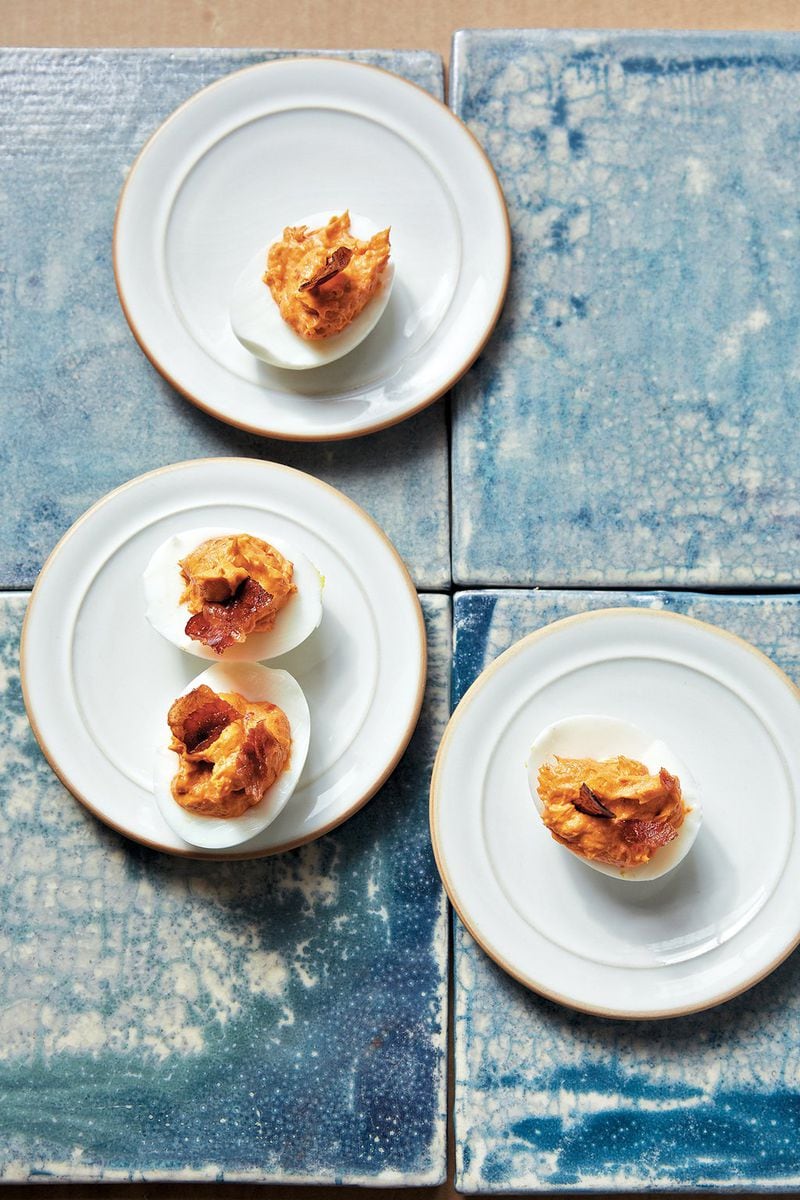The whole thing apparently started with vermouth. Think Turin, Italy, around 1786. A smart young distiller of tinctures and elixirs, Antonio Benedetto Carpano, creates a fortified white wine boasting dozens of botanicals, then cleverly markets it as the perfect before-dinner drink for ladies, in place of manly red wine.
Dainty, delicious: Bingo. It’s vermouth, and before long everyone is making a version. Enter accessible ice, gin, and Western industrialization, and the aperitivo, or aperitif, if you’re French – is born. From the Latin, “to open, uncover” the bittersweet nature of this kind of drink is designed to open the palate and relax the soul.
“As we move through the 19th century, the growing industrialization of the West creates leisure for the working class, which allows for more time to be spent socially,” said cookbook author Kay Plunkett-Hogge. Her most recent book, “Aperitivo: Drinks and Snacks for the Dolce Vita” (Octopus Publishing, $19.99) explores bits of aperitivi history with recipes and delves into the evolving nature of this ever-evolving facet of “la dolce vita,” the sweet life.
“Coupled with the concurrent explosion of the ice trade … this synchronicity enables cocktails in America, the British development of pub culture and gin palaces, and the French and Italian development of aperitifs and aperitivo, all around the same sort of time. And all within an urban context,” explained Plunkett-Hogge.
But it’s in Italy where the aperitivo takes on a meaning all its own, beyond the cocktails, beyond the nibbles. Especially in northern Italy, where the culture was born, the aperitivo is a lifestyle.
“The broader thing is that (Italians) have a ‘work to live’ attitude while we’re rather more ‘live to work’ (in the UK and US),” said Plunkett-Hogge.
"The difference in Italy is all in the attitude," said Julian Goglia, beverage director of Ten Apart, the Atlanta-based hospitality team behind The Mercury, The Pinewood and Proof Cocktail Syrups. "The American 'happy hour' doesn't really compare to what goes on in Italy between 7 and 9 p.m. In Italy, it feels like everyone is on vacation, even though they aren't."
The 150-seat restaurant will offer no less than five apertivi on its cocktail menu, as well as nine Americano cocktails, with a focus on premium spirits and house-made ingredients such as Aperol, fizzes, Negroni, and amaros, according to Goglia and the concept’s chef, Adam Waller. “We’re hoping to replace the American ‘on-the-go’ attitude with something a little more relaxed,” said Waller.
His menu moves from light (warm focaccia with whipped ricotta and olive oil; mussels with Calabrian chilies, garlic, white wine, oregano) to heavy (eggplant Parmesan, flounder piccata), but touches on true aperitivo culture with modern classics such as “Sal’s meatballs” plus assorted pizze and pasta.
With all this foodie laissez-faire, how does a novice enjoy the aperitivo hour at home or about town? Are there any rules?
“I think if you’re new to it, the first thing to remember is to keep it simple,” said Plunkett-Hogge. “Unlike tapas, which can form a whole meal, aperitivo is designed to open your appetite for the meal to come. So you don’t want to over-indulge.”
Her book explores first the cocktails, from the Negroni to the Bicicletta, then offers regional menus from Milan, Turin, Rome, Venice and Florence, with a breakdown of meats, cheeses and wines along the way.
“Experiencing the aperitivo hour is a broadly cross-cultural way of behaving, whether it’s Thailand’s aharn len, which roughly means ‘play food,’ or Japanese izakaya, or Spanish tapas and even French and Swiss raclette,” said Plunkett-Hogge. “You sit with friends, have a drink, and eat something alongside it.”
And channel your inner Sophia Loren.
Bar Americano’s Venetian Spritz
“One of our all-time favorite aperitivi,” said Julian Goglia of Bar Americano. “It’s simple and always a crowd pleaser.” Can’t find Select Aperitivo? Don’t worry, it’s coming soon: Ten Apart is importing the spirit for their selective bar menu. In the meantime, substitute Aperol or Campari.
Sal’s Meatballs
Chef Adam Waller of Bar Americano shares his Sicilian great-grandfather’s recipe for a classic, redone with a lighter touch. The meatballs are on the restaurant’s appetizer menu.
Kay’s Perfect Negroni
Kay Plunkett-Hogge shares this classic in her new book, “Aperitivo: Drinks and Snacks for the Dolce Vita” (Octopus Publishing, $19.99), with this funny intro: “As Orson Welles said, ‘The bitters [Campari] are excellent for your liver. The gin is bad for you. They balance each other.’ He was not wrong.”
Uova alla Diavola Calabresi (Calabrian Deviled Eggs)
From cookbook author Kay Plunkett-Hogge, in her book “Aperitivo: Drinks and Snacks for the Dolce Vita” (Octopus Publishing, $19.99), comes this spicy take on a Southern American favorite: “The Calabrians are the kings and queens of Italian chilies … These feisty fellows make the perfect accompaniment to a frosty glass of Prosecco …”
About the Author










